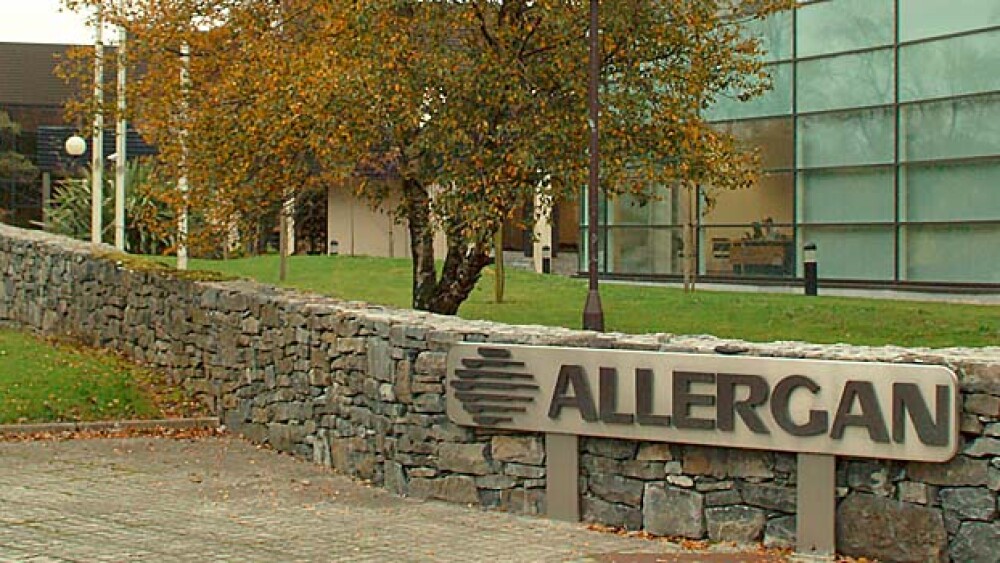In 2015, shares of Allergan were trading at $331.15. This morning, the price of that stock is more than half that price, $145.60 following a 2.2 percent increase after the first day of the J.P. Morgan Healthcare Conference.
In 2015, shares of Allergan, Inc. were trading at $331.15. This morning, the price of that stock is more than half that price, $145.60 following a 2.2 percent increase after the first day of the J.P. Morgan Healthcare Conference.
CNBC stock pundit Jim Cramer said at one time Allergan was a darling of stock watchers, but has seen the valuation of those stocks decline dramatically. In an interview with Allergan Chief Executive Officer Brent Saunders, Cramer noted that internally, the company is quite strong, with multiple assets in the pipeline and a strong leadership team.
Saunders told Cramer that for the three quarters publicly reported for 2018, the core business of Allergan grew 7.7 percent. The company has 12 programs in Phase III development and about 60 other early and mid-stage assets in the clinic, Saunders said.
“We have a great company. We need to do a better job showing that to investors and other stakeholders,” he said.
Despite that strength, Saunders acknowledged that there have been some “unforced errors” that have led to some investor concern for the company. One of those errors concerns the intellectual property rights to Restasis, the company’s blockbuster dry eye treatment. Allergan’s patents for Restasis cover various elements of the drug through 2024. In 2018, the company faced lawsuits from pharmacy retailers that alleged Allergan was trying to prohibit generic drugmakers from selling their version of Restasis in the U.S. Allergan has also faced criticism for the efforts it sought to protect the patents for Restasis, which includes an attempt to transfer the rights to the Saint Regis Mohawk Tribe in New York. The company made the move in 2017 as part of an attempt to take advantage of the Mohawk tribe’s sovereign immunity would shield the drug from the Inter Partes Review challenges to its patents on Restasis.
In his conversation with Cramer, Saunders also pointed to other issues where the company has taken a hit due to increased generic competition. He pointed to efforts made by U.S. Food and Drug Administration Commissioner Scott Gottlieb to increase generic competition and availability in the United States. Calling it the “right thing,” Saunders noted that the move cost the company more than $1.5 billion in revenue from branded products. However, he said that loss, plus the losses from Restasis, are “almost in the rearview mirror.” He said the core business though, is robust and healthy.
With those negatives out of the way, Cramer turned to one of Allergan’s core strengths – medical aesthetics and its blockbuster Botox. Offering his opinion, Saunders said that medical aesthetics is the “best business in the biopharmaceutical industry.” He noted that it’s a highly durable business and is “cash pay all over the world” and is also less regulated. He said that the medical aesthetic market is going to double and Allergan is the major player in that field.
Cramer pressed Saunders on the possibility of creating a separate medical aesthetics company based on Botox, something he said that many investors are interested in seeing. Saunders though, said that Botox has too many other uses medically to fully pull it out from the company’s drug offerings. While the Botox treatment has been good for smoothing wrinkles, Saunders noted that Botox has become a backbone for multiple medical issues, including migraine treatment and other forms of spasticity.
Saunders also pointed to the leading position that Allergan is looking to forge in migraine treatment, behind Botox and some of its assets that could see regulatory approval soon, such as its oral Phase IIb/III CGRP antagonist, atogepant and ubrogepant, an oral treatment for acute treatment of migraine headaches.





